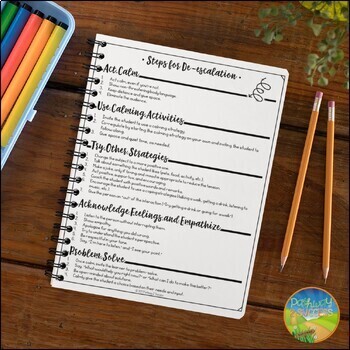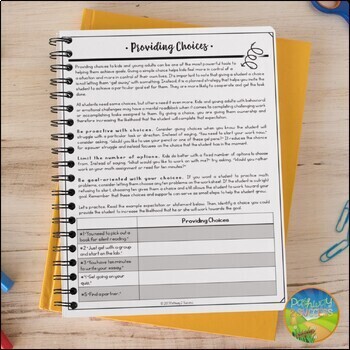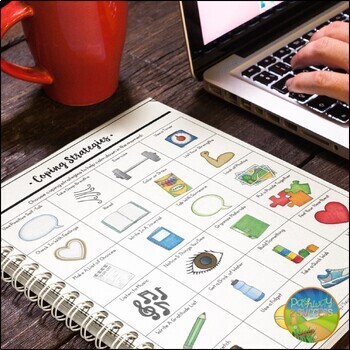De-escalation Strategies Guide - Teacher Workbook for Challenging Behaviors
What educators are saying
Description
This guide focuses on de-escalation strategies and proactive solutions for working with kids and young adults with challenging behaviors. Teachers, support professionals, administrators, and other adults can use de-escalation techniques when working with kids and young adults. Kids and young adults who become overwhelmed and upset more frequently need adults who understand and utilize de-escalation strategies in times of stress. These strategies help kids regain control of their own emotions so they can effectively problem-solve any challenges that arise.
This resource is the ideal training kit to help educators, administrators, and paraprofessionals work with kids and young adults with challenging behaviors. It provides strategies, supports, and techniques to help work through challenging behaviors while teaching skills kids need.
Resources consist of detailed training guides, practice scenarios, reference lists, and a quick pocket-guide to help defuse and de-escalate situations on the fly.
Why Learn De-escalation Strategies
Kids and young adults who become emotionally overwhelmed or irritated in a situation may begin to express their emotions in challenging ways. Examples might include a student arguing with the teacher or refusing to start an assignment. Quite often, without de-escalation techniques, these situations become a power struggle between the young adult and the teacher. These power struggles only make the situation worse, though.
One way to handle these types of behaviors is to de-escalate the situation as soon as possible. De-escalation focuses on helping the student return their emotions back to a normal level. It is critical that the student is calm for a period of time before behavior and expectations are discussed again.
Simply put, de-escalation strategies are important to help kids and teens manage their big emotions, regain calm, and make good choices. While de-escalation strategies are not always going to solve every challenging behavior in the classroom, they can be helpful tools to defuse those challenging situations quicker.
Table of Contents
• Educator Guide
- Understanding Behavior -
• Basic Tips for Managing Challenging Behaviors
• Common Triggers
• Student Stressors and Triggers Form
• Stress Response
• Quotes to Consider
- Proactive Strategies -
• Organization and Routines
• Setting Expectations
• Providing Choices
• Changing Your Words
• Checking Yourself
• Skills to Teach
• Coping Strategies
• Coping Strategies: Breathing Exercises
- De-escalation Strategies -
• Purpose of De-escalation
• Steps for De-escalation
• Let's ADAPT
• Student Reflection Form
• Incident Debriefing Form
• De-escalation Practice Scenarios
-De-escalation Quick Guide and Lists -
• De-escalation Quick Guide
• ADAPT Quick Guide
• De-escalation Strategies and Techniques List
• Proactive Strategies and Techniques List
Follow Me!
{ Click here to follow my store! }
Tips for Customers:
- Click here to follow my store for notifications about new resources and freebies.
- If you have questions, please contact me through Q & A and I'll get back to you as soon as I can!
- Please consider leaving feedback on this resource to receive TpT credits! I always strive for 5 stars and love hearing your feedback.
Terms of Use:
© Pathway 2 Success. One license is for the classroom/personal use for one educator and their students. Materials may not be shared with other educators without the purchase of extra licenses. Materials may not be posted on the Internet where they can be publicly accessed. Personal and classroom use only.
Disclaimer: These resources are for supplementary support/education purposes and are not a replacement for education or other necessary supports. Educators, parents, and others who utilize these materials are encouraged to seek out additional support, as needed.





